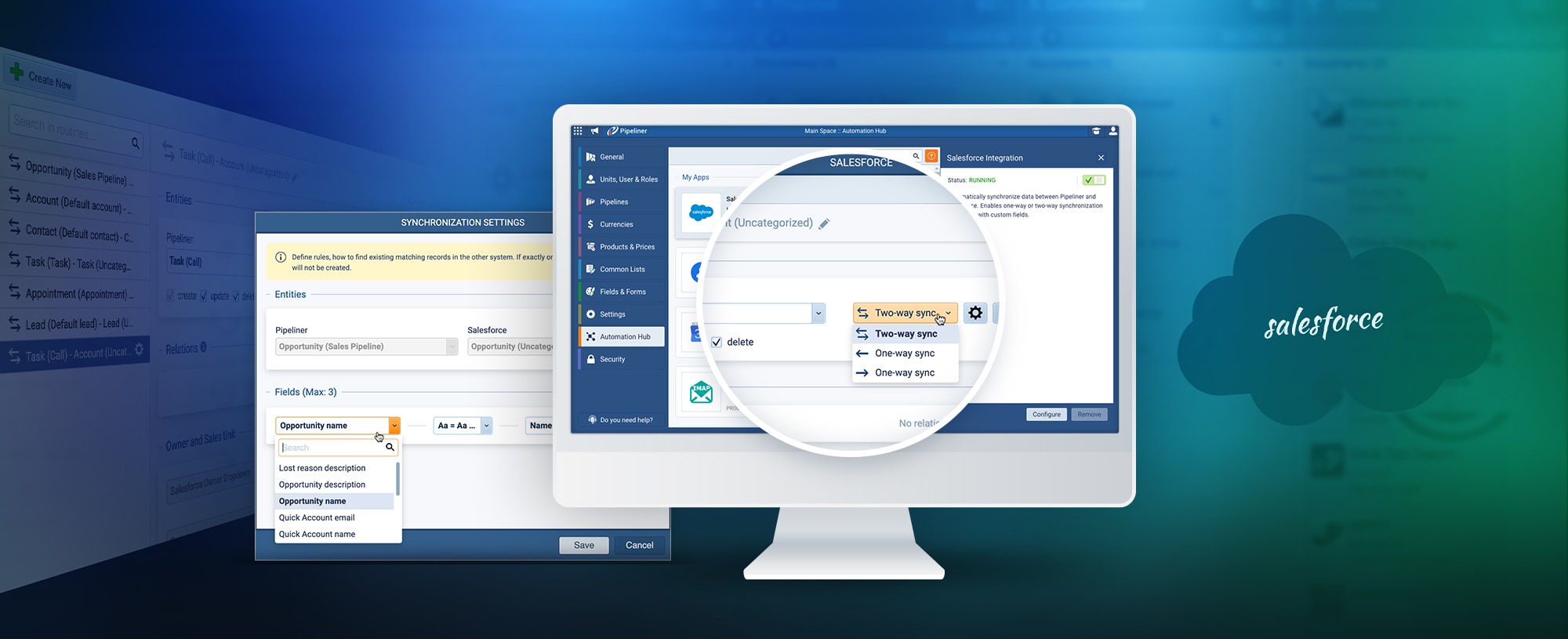Moving forward with Pipeliner concepts, let’s now look at yet another remarkably efficient Pipeliner administration approach: fields and forms. As with much of our other functionality, we’ve made fields and forms far easier than other CRMs. No programming is required, and this function, along with other administration, can be learned in a few hours by anyone who is computer-literate.
Different CRM functions are referred to, in Pipeliner CRM, as entities. It is within entities that fields and forms are utilized. Entities act as dataData Data is a set of quantitative and qualitative facts that can be used as reference or inputs for computations, analyses, descriptions, predictions, reasoning and planning. storage for their own individual areas, and are 9 in number:
- AccountAccount Account refers to a record of primary and background information about an individual or corporate customer, including contact data, preferred services, and transactions with your company.
- Contact
- LeadLead Lead refers to a prospect or potential customer (who can be an individual or organization) that exhibits interest in your service or product; or any additional information about such entity.
- Opportunity
- Task
- Appointment
- ProductProduct Product refers to anything (an idea, item, service, process or information) that meets a need or a desire and is offered to a market, usually but not always at a price.
- Product Line Items
- Projects (just released)
It has been our experience that these entities satisfy 95 percent of company needs. We will in the future, however, make it possible for businesses to create their own unique entities.
Flexible Forms
Customizable forms are available within most of Pipeliner’s entities, enabling multiple data point visualization. When you are setting up your system, you must first decide which forms you’ll need for each entity and how you will use them. Within a task, a form might be a call, an email, a survey or a support ticket.
Different departments might require different forms. Or, in another example, you might have a partner program, and partners might be handled differently.
Creation of Fields
You may create as many customizable fields as you need within each form. These fields can be made accessible to varying degrees: not accessible at all, read-only, or with read-write permissions. We’ve done this because some roles will require access to specific fields and some will not, just as there will be various departments that will need access and others that will not.
Permissions are no longer simply a matter of preference, as they might have been in the past. Today data security is a prime concern, so only certain positions or departments in a company should have privileges. There are even legalities involved, such as with HIPAA requirements, that means data access is a matter of law.
New—Project Management
Special mention must be made of our new Project Management entity, as it differs from other entities in several significant ways.
With Project Management, you can utilize different kinds of forms to create projects. As with other entities, forms can be edited and customized. Fields—such as rollup fields which can be configured to aggregate data about related records, and lookup fields, which are configured using filter criteria—can be customized and added to forms.
A project, once created on the back end, is made available as a front-end templateTemplate Template is a generic file with a framework showing the standard sections or features of a specific kind of document, used to create a new document of the same type faster and easier.. The project would then have process-driven steps. The project can be added to an account or opportunity, or it can even be used by itself as a standalone project. Within an opportunity, a project could be a particular customerCustomer Customer is an individual or an organization that purchases a product or signs up for a service offered by a business.’s buying process. It could also be an onboardingOnboarding Onboarding is the process or act of introducing a new customer to your product or service; or integrating a newly hired employee into your workforce or team. process, utilized with any new account.
While project management applications are usually not correlated with CRM, the great news is that, in the case of Pipeliner, project management is built right in and operates seamlessly as part of CRM.
Never Set in Stone
Flexibility is a significant aspect of fields and forms within Pipeliner. After you’ve set them up, you can be assured that, if required, you can easily change them. Nothing is set in stone.
Your Independence is Our Goal
We have made Pipeliner’s fields and forms simple to customize for one reason—so it is possible for you to independently run your system. When you need to set up new forms or fields, you can do so without the requirement of outside guidance such as a consultant—which you may or may not be able to find or afford.
Cybernetic principles—the science of simplicity—is utilized in our feature design, as it is in the overall design of our CRM solutions. This simplicity applies to feature ease of use and also to their customization by an administrator.





